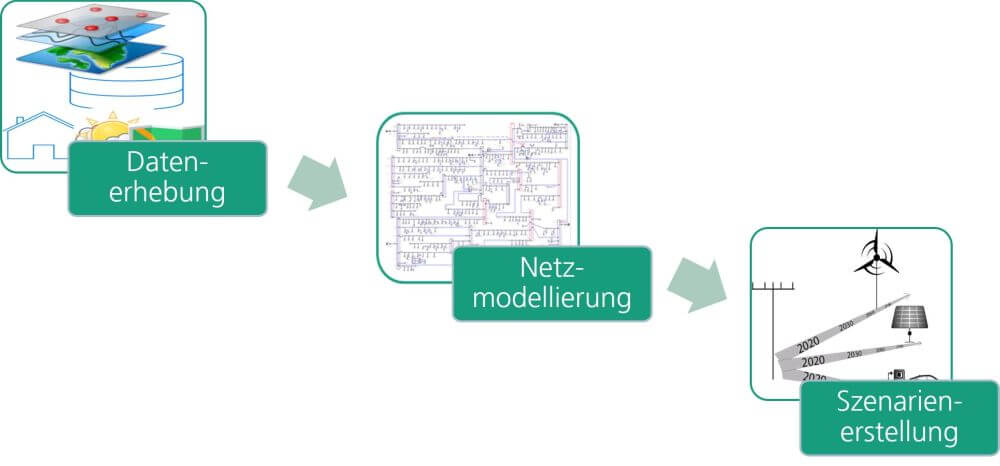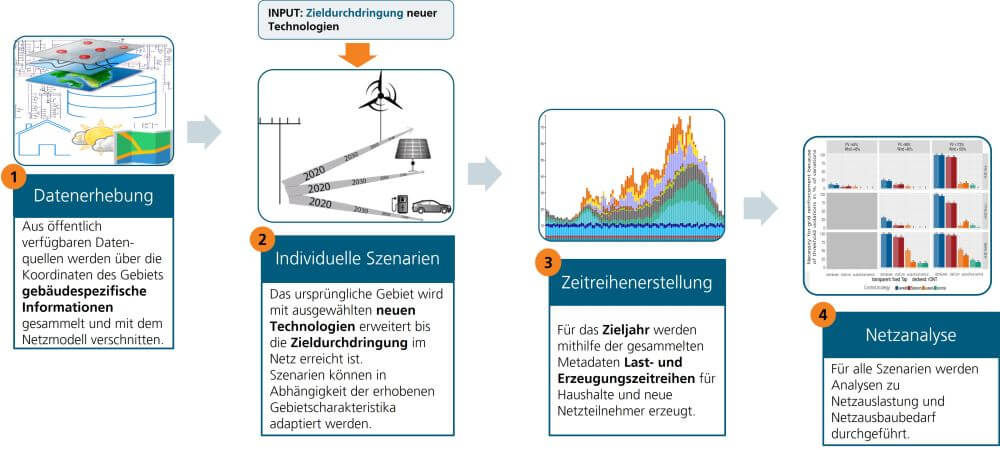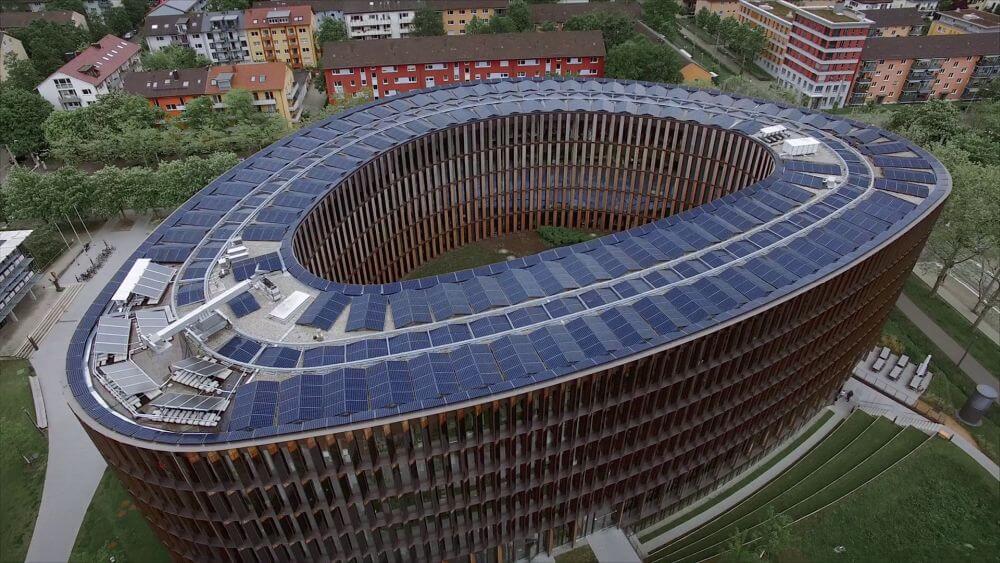The tasks of distribution grids are increasing with the transformation of the energy system. The electrification of the heating and transport sectors and the integration of distributed decentralized generation are massively increasing the need for grid expansion.
With our tools, global scenarios can be broken down to the grid area under consideration with grid connection point accuracy. In order to estimate the future supply task as precisely as possible, grid operators data is blended with publicly available geoinformation.
Load and generation time series are generated on the basis of local weather conditions so that weather-related correlations, e.g. in the operation of heat pumps, are realistically modeled. This allows the challenges facing grid operators to be precisely quantified. Thereby, grid expansion decisions can be made taking future operational management options into account.
Expansion decisions can be derived with the help of the Intelligent Distribution Grid Optimization Framework.



